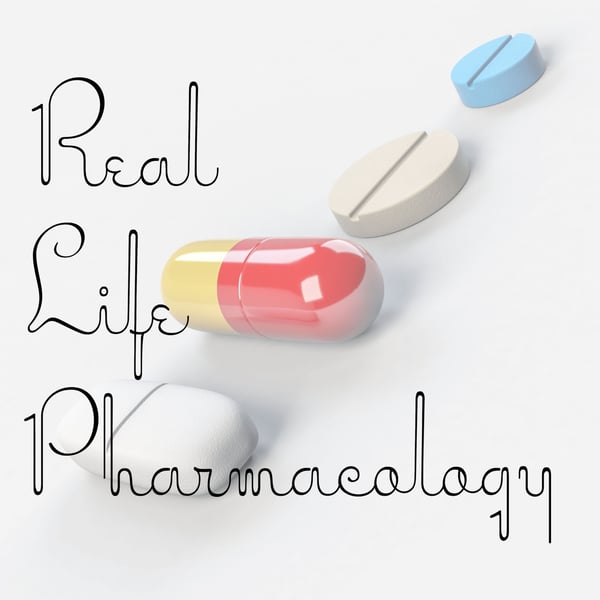Atypical Antipsychotics (2nd Generation) RLP Episode 015
Real Life Pharmacology - Pharmacology Education for Health Care Professionals
Eric Christianson, PharmD; Pharmacology Expert and Clinical Pharmacist
5 • 716 Ratings
🗓️ 17 May 2018
⏱️ 15 minutes
🧾️ Download transcript
Summary
All subscribers to the website/podcast will get access to a FREE Top 200 Drug Study Guide where I highlight the 3 most highly testable pearls from each medication (this is a 31 page PDF!) In addition, you'll get a free 100 question pharmacology test. Both resources are free, simply for following the podcast! What are you waiting for? Click Here to Subscribe
Transcript
Click on a timestamp to play from that location
| 0:00.0 | On this episode of real-life pharmacology, I'm going to cover the second-generation antipsychotics. |
| 0:08.8 | Second-generation antipsychotics are often referred to as atypical antipsychotics. |
| 0:16.2 | And this class designation differentiates it from the first generation antipsychotics, |
| 0:25.1 | which are less commonly used, and that's primarily due to the higher incidence of extra-paraminal and |
| 0:34.2 | movement disorder side effects. Some classic examples of second generation antipsychotics include |
| 0:42.2 | Arapyprysal, brand name Abilify, quatyapine, brand name Syracille, |
| 0:47.6 | Risperidone, brand name Risperidol, |
| 0:50.5 | Clausapine, brand name clausoryl, ziprazadoneone brand name geodon, and olanzapine brand name zyprexia. |
| 0:59.6 | The mechanism of action of antipsychotics in general is that they block dopamine receptors. |
| 1:08.6 | And there's one really important principle I think you want to remember with dopamine receptors. And there's one really important principle I think you want to remember with dopamine |
| 1:14.7 | as it pertains to medication management. When we block dopamine, that can potentially cause |
| 1:25.1 | movement disorders amongst other symptoms. |
| 1:29.3 | And in patients with disease states where we already have movement disorders, |
| 1:35.4 | like Parkinson's, in that disease state, we actually give more dopaminergic agents. |
| 1:43.8 | So low dopamine, that means potential for movement type disorders, |
| 1:50.9 | higher levels of dopamine in the brain, that potentially leads to psychotic disorders, |
| 1:58.5 | hallucinations, delusions, and things of that nature. |
| 2:02.4 | Understanding that mechanism of action, I think, will also help you understand what the medications, |
| 2:10.2 | the antipsychotics, are used for. |
| 2:12.5 | So most often antipsychotics are used for schizophrenia, bipolar. |
| 2:22.9 | You may see it used off-label in acute delirium, |
| 2:30.9 | potentially aggressive type behaviors as well. Rarely you will see these agents used for augmentation of depression and or anxiety disorders. |
... |
Please login to see the full transcript.
Disclaimer: The podcast and artwork embedded on this page are from Eric Christianson, PharmD; Pharmacology Expert and Clinical Pharmacist, and are the property of its owner and not affiliated with or endorsed by Tapesearch.
Generated transcripts are the property of Eric Christianson, PharmD; Pharmacology Expert and Clinical Pharmacist and are distributed freely under the Fair Use doctrine. Transcripts generated by Tapesearch are not guaranteed to be accurate.
Copyright © Tapesearch 2025.

